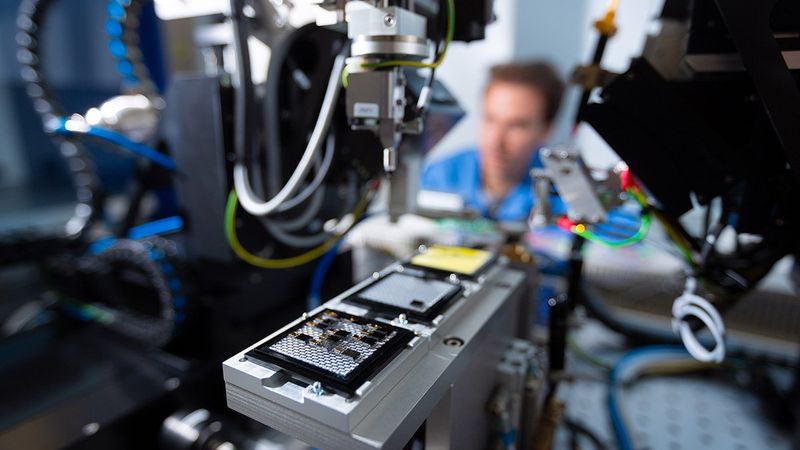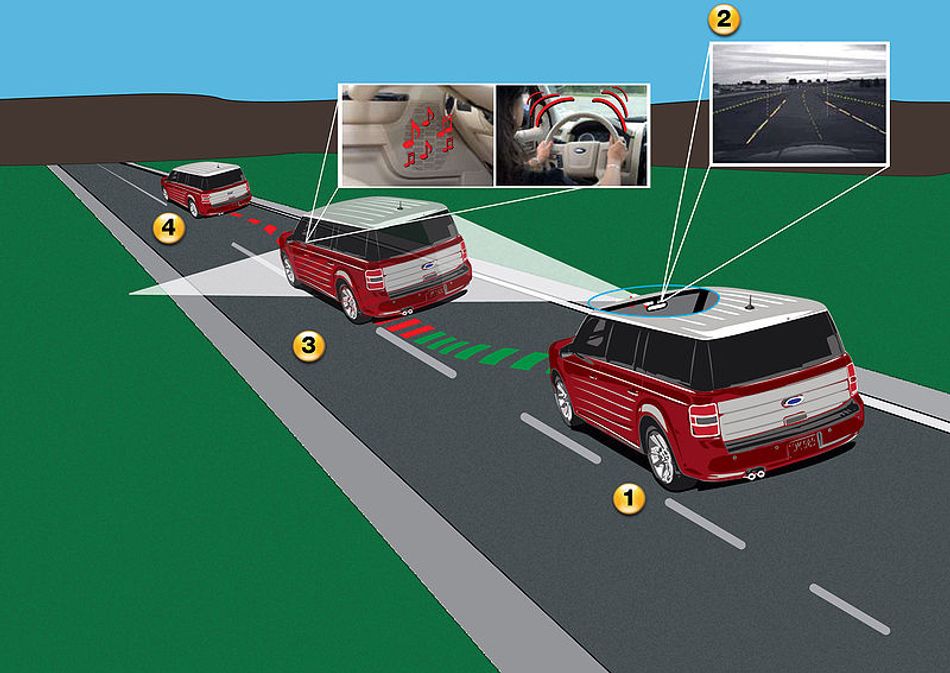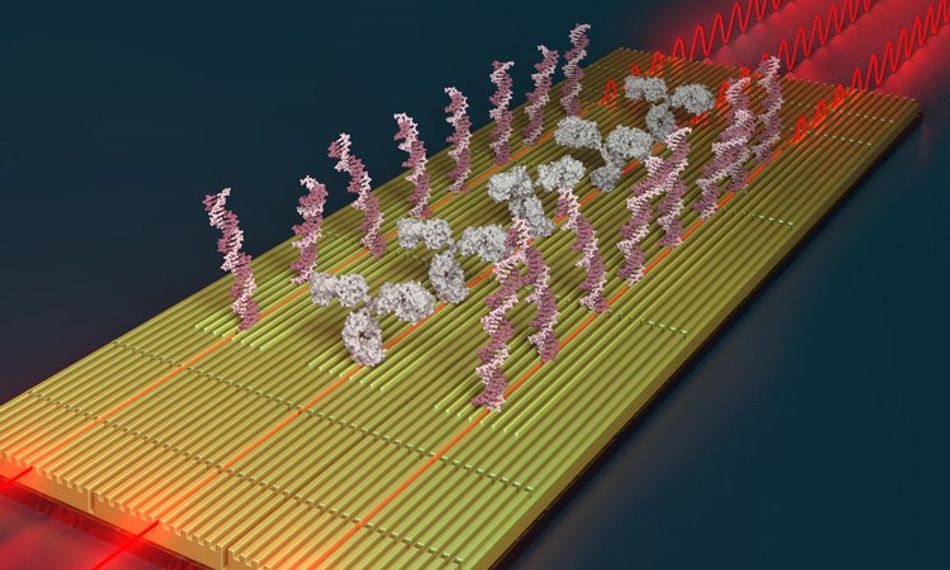Key Application Areas for Integrated Photonics
Article 2 of our Integrated Photonics series: Integrated Photonics is enabling innovation in a broad and expanding list of applications.

PHIX - Gijs van Ouwerkerk
This article is sponsored by PhotonDelta, a growth accelerator for the integrated photonics industry. Its network consists out of chip designers, module companies, foundries, researchers, software developers as well end-customers. Through their sponsorship, PhotonDelta supports knowledge building and resource sharing on this topic.
Introduction
Integrated photonics is the rapidly emerging field of photonics that works to integrate multiple photonic functions into integrated circuits for communication, sensing, and, going forward, computing applications. Complex photonic circuits can now generate, process, and detect light, in analogy to how electronic integrated circuits do for electronic signals by way of connecting multiple discrete single-function components (e.g. dedicated lasers, photodetectors) and relevant optical interfaces.
As many communication and sensing applications already make use of light, solid-state integration on a Photonic Integrated Circuit (PIC) carries the promise of significant reduction of size, weight, manufacturing costs, and power consumption while improving reliability, in comparison to the assembling and packaging of multiple discrete photonics components and bulk optics.
Integrated photonics are already applied in impactful applications such as high-speed fiber-based optical communications, next-generation low-cost environmental mapping systems, and lab-on-chip biosensors for fast and accurate analysis of biological samples.
For a more comprehensive introduction to Integrated Photonics read our previous foundation article on the topic. This article will focus on the areas PICs are being applied and how they are accelerating innovation in these sectors.
Automotive
The automotive industry is going through a rapid transformation driven by trends including electrification, autonomous vehicles & driver support systems, and changes in mobility patterns and city infrastructure. These trends will influence not only the physical design and capability of commercial, public, and individual vehicles but also the broader social and economic impacts of changes to car/fleet ownership and use. The increased need for sensors in vehicles, in the electric/hybrid drivetrains as well as in advanced driver-assistance systems (ADAS) up to autonomous driving systems, creates new significant opportunities for the integrated photonics industry (Figure 1).
 Figure 1. An example of an ADAS system. Lidar
Figure 1. An example of an ADAS system. Lidar

The role of integrated photonics in the automotive sector has so far been modest, but its potential is extensive and touches all aspects of the vehicle and system design. One promising area is in Lidar (BAD) (Light Detection And Ranging) systems, used to assist autonomous vehicles to ‘see’. Currently, these laser-based systems are extremely expensive, often costing more than tens of thousands of dollars for a single system which limits their commercial availability. Additionally, these early systems carried with them concerns about their reliability, eye safety (due to the close to visible range wavelength regions used), and limited accuracy (given the relatively simple ranging schemes possible). Integrated photonics offers the opportunity to reduce this cost and increase system safety[1].
The Doppler effect is the term given to the phenomena of the frequency of a wave changing when its source is in motion relative to an observer. Frequency-modulated continuous-wave (FMCW) Lidar works by measuring the doppler shift coherently, preventing interference from sunlight and other lidar systems. This system design offers distance resolution but comes at the cost of low acquisition speed and requires a highly coherent, as well as precisely chirped, laser source. Researchers from the Swiss Federal Institute of Technology have outlined how a novel approach multiplexes a single FMCW laser using a high-quality silicon-nitride microresonator on a photonic chip.
PhotonDelta is currently developing a roadmap for integrated photonics applications for the automotive industry, with a focus on the potential of Lidar, set to be published in early 2021.
Continuum-of-Care
The traditional healthcare paradigm of focusing on diagnosis and treatment of patients only after they are seriously ill has been under growing pressure to change due to increasing costs, growing populations, and rapid demographic changes (i.e. aging). There is a growing global trend to approach healthcare more holistically, with a particular focus on prioritizing prevention before illness, ensuring that populations can stay healthy for as long as possible. Additionally, there is also an increased focus on rehabilitation, ensuring that former patients can rapidly and fully recover to good health using a broader approach to healthcare than just medication.
Traditionally the diagnosis and treatment of patients occur in specialized centers (i.e. clinics and hospitals). A holistic approach to health requires decentralization, i.e. shifting diagnosis and treatment closer to the patients (BAD), with the ultimate vision including remote diagnosis and treatment from people’s homes. Despite strong evidence that this approach would reduce national health costs and improve patients' prognosis while reducing hospital time and resources, there has been little movement in the national health care approach around the world. To implement a more forward-looking healthcare method, an alternative to hospital-specific medical devices must be created – and this is where Integrated Photonics can provide the answer.
Light has the relevant property that a number of its parameters may change under the effect of its interaction (e.g. reflection, refraction, scattering) with bio body tissues and fluids. Light-based sensors have already been adopted into many medical devices and they will continue to be introduced at a large scale.
Integrated Photonics offers the possibility to dramatically reduce the cost and size of hospital oriented medical devices and therefore kickstart a new approach to diagnosis and treatment. Several global companies are addressing this challenge by developing Integrated Photonic technology in two main areas: bio-sensing (see below) and Optical Coherent Tomography (OCT) which is a diagnostic method for eyes, skin, and neurology diseases. Within this emerging area, PhotonDelta is developing a roadmap for integrated photonics applications for the Continuum-of-Care, with a focus on bio-sensing, set to be published in early 2021.
Biosensors
Silicon Nitride PICS (SiN PICs) are optimal for the detection of biological molecules. They work in a very wide wavelength range from visible to near-infrared which means they avoid the water absorption window of water and allow fluorescence detection. This wavelength range makes it easy to combine them with a cheap laser source. SiN allows for a small bend radius which means the light-contacting waveguide can be rolled up to create a very long light path on the chip’s surface. This results in a long interaction time of the light with biomolecules that are in the vicinity of the surface making the biosensors based on SiN PICs highly sensitive. They also offer the ability for simultaneous multiplexed sensing of different target molecules by using the same body fluid (e.g. blood, saliva) – ie they can test for multiple items at once. A full view of how a photonic biosensor works can be accessed here. (BAD)
PIC-based biosensors are expected to be applied in a multitude of areas, such as health-related targets (e.g. glucose monitoring in diabetes patients, early detection of the onset of cancer or infectious diseases), environmental applications (e.g. the detection of pesticides and pollutants), and the food industry (e.g. determination of antibiotics or hormon residues in food, early detection of infectious diseases). Dutch-based Lionix International is developing PIC-based biosensors to develop rapid testing (BAD) for COVID-19.
Data & telecommunications
Research indicates that the total internet demand is growing at about 40% per year. This is driven by a huge appetite for video - Netflix now takes up to 30% of the internet’s bandwidth at peak hours. Mobile access to video is becoming more widespread as are video-centred applications such as Tik-Tok. Data consumption per device is rapidly increasing. Mobile users in North America are expected to reach 48 GigaBytes (GB) per month per smartphone by the end of 2023[2]. Integrated photonics has the potential to provide significant power, space, and cost savings, and new functionality when integrated into optical communication systems. They can also increase the transmission capacity (BAD) of existing communication systems.
Dutch-based startup, Effect Photonics , has been developing in this field for more than a decade and their first product a 10 Gb/s DWDM tuneable optical transceiver module is now ready for market (Figure 2). The module has an autotuning feature, in which the module scans the network for what channel to use. No engineer is required to program it at installation: it’s plug-and-play and hot-pluggable. The next step is higher bandwidths, a 25Gb/s is in the works with 100 and 400/600 channels in the works too.
Advanced components for 6G networks
Photonic technology will play a key role in 6G networks across different segments. In 6G transport, it has the potential to allow the transmission and routing of large amounts of data traffic at an acceptable cost. In data centers, photonic interconnect and switching will introduce a new architecture that can reduce energy consumption while providing a high level of flexibility in resource utilization. There is also promising research into photonic beam-forming networks based on packaged integrated photonic circuits. Additionally, integrated photonics may be able to help achieve some functions of future radio systems that will enable further evolution towards the 6th generation of mobile networks.
Quantum Computing
Quantum computers based on photons instead of electrons have many advantages. A key advantage is the ability for the computer to operate at room temperature A classic quantum computer needs to be maintained at temperatures well below freezing for optimal performance making their storage and maintenance extremely costly and fragile.
Earlier this year Canadian based startup, Xanadu announced the release of the world's first publicly available photonic quantum computing platform. Applicants can access 8, 12, and soon 24 qubit machines over the cloud. Despite this historic breakthrough, the potential of photonic quantum computing has not even begun to be tapped.
More applications to come
Other application domains and market segments for Integrated Photonics are expected to mature within 5-10 years. These include fiber-based sensor systems for real-time, and highly accurate distributed structural health monitoring, applications in energy grids and wind turbines, defense and aerospace applications as well as in monitoring systems for highly critical structures such as dikes and bridges. Another exciting area is NIR spectral sensing modules and components for analysis of fruit and vegetable nutrients, taste, and structure insights, which will meet increasing global concerns about food safety, storage, and traceability. Selected Integrated Photonics applications will be addressed in future articles.
Conclusion
Integrated Photonics is a rapidly emerging technology and industry which offers a dramatic reduction of costs and size for many communications and sensing components. As such offering huge potential to enable disruptive innovative products and solutions across industries and applications. Integrated Photonics is growing rapidly into one of the defining technologies of our time.
About the sponsor: PhotonDelta
PhotonDelta is a growth accelerator for the Dutch integrated photonics industry. Its objective is to promote the adoption of integrated photonics and support companies to get prioritized access to the Dutch Integrated Photonics supply chain. Furthermore, PhotonDelta runs a new business creation program that provides companies, ranging from startups to SMEs and big organizations, with access to strategy, market, and funds.
Through its wide network within the industry, PhotonDelta has gathered insights on market trends, challenges, and product roadmaps. This information is used to drive business creation, investments, and strategic technology roadmaps. Furthermore, PhotonDelta actively supports start-ups and SMEs to facilitate their involvement with the Dutch integrated photonic supply chain. This includes facilitating options for establishing a solid presence in the Netherlands.

References
- ERICSSON Mobility Report November 2017, Mobile data traffic growth outlook. [Online] Available at: https://www.ericsson.com/en/ mobility-report/reports/november2017/mobile-data-traffic-growth-outlook


